The Best Lithium Battery Maintenance And Usage Guide -Latest

Lithium batteries have become ubiquitous in our daily lives. From smartphones to electric cars, these high-performance energy storage devices are the backbone of modern technology. Despite their ubiquity, many people remain unaware of how to use and maintain lithium batteries properly. This lack of knowledge can lead to reduced battery life, safety hazards, and environmental damage.
Therefore, this article presents a comprehensive guide for the best lithium battery maintenance and usage practices. The guide covers topics such as understanding the basics of lithium batteries, different types and uses of lithium batteries, tips for maintaining them effectively, charging a new battery for the first time correctly, handling safety precautions while using them, recycling methods and recommended brands/products.
By following the guidelines outlined in this article, users can ensure that their lithium batteries perform optimally while minimizing risks to themselves and the environment around them.
Key Takeaways
- Proper maintenance and usage are crucial for maximizing the lifespan of lithium batteries.
- Safety precautions must always be followed when handling and storing lithium batteries.
- Charging and storage techniques should be carefully chosen based on the type of lithium battery being used.
- Regular testing and troubleshooting can help prevent leaks and ensure the battery is functioning at full capacity.
Understanding Lithium Batteries: The Basics

An understanding of the basics of lithium batteries is crucial for maintaining their optimal performance and extending their lifespan.
Lithium batteries are rechargeable power sources that use lithium ions to create an electrical charge. They are commonly used in portable electronic devices, such as laptops, smartphones, and tablets because they have a high energy density and can hold a lot of power in a small space.
To keep your lithium battery performing at its best, it's important to follow some basic care guidelines. It's best to store your battery at room temperature or slightly below. High temperatures can cause damage to the battery and decrease its overall lifespan. Additionally, you should avoid exposing your battery to extremely cold temperatures or moisture.
When it comes to charging your lithium battery, there are some key tips to keep in mind. First, always use the charger that came with your device or a manufacturer-approved replacement. Using an off-brand charger can damage the battery and even pose a safety risk. It's also important not to overcharge or undercharge your battery - aim to keep it between 20% and 80% charged for optimum performance.
By following these simple tips for storage and charging, you can help extend the lifespan of your lithium battery considerably.
Types of Lithium Batteries and Their Uses
Differentiating between the various types of lithium batteries is crucial to understand their distinct uses and benefits.
The most common type of lithium battery is the Lithium-ion (Li-ion) battery, which is popular for use in portable electronic devices like smartphones and laptops due to its high energy density and long lifespan.

Another type of lithium battery is the Lithium Polymer (LiPo) battery, which has a lower energy density compared to Li-ion but offers more flexibility in terms of shape and size, making it a popular choice for wearable technology.
When it comes to proper maintenance and usage of lithium batteries, there are several best practices that users should follow.
Firstly, it's important to store lithium batteries at room temperature and avoid exposing them to extreme temperatures or humidity levels.
Additionally, users should avoid overcharging or completely draining the battery as this can significantly reduce its lifespan.
It's also recommended to charge the battery before it falls below 20% capacity.
Lastly, regular inspection of the battery's physical condition can help identify any potential issues early on.
Signs such as swelling or discoloration can indicate a problem with the internal components of the battery and warrant immediate replacement.
By adhering to these guidelines for care and usage, users can ensure that their lithium batteries remain functional and safe for prolonged periods while maintaining optimal performance throughout their lifespan.
Lithium Battery Maintenance Tips
This subtopic focuses on the best practices for maintaining lithium batteries.
To ensure optimal performance, it is crucial to correctly charge the battery and store it properly when not in use.
Additionally, operating and transporting precautions must be taken to prevent damage or accidents.
Following these guidelines can extend the lifespan of your lithium battery and improve its overall efficiency.
Correctly charge the lithium battery
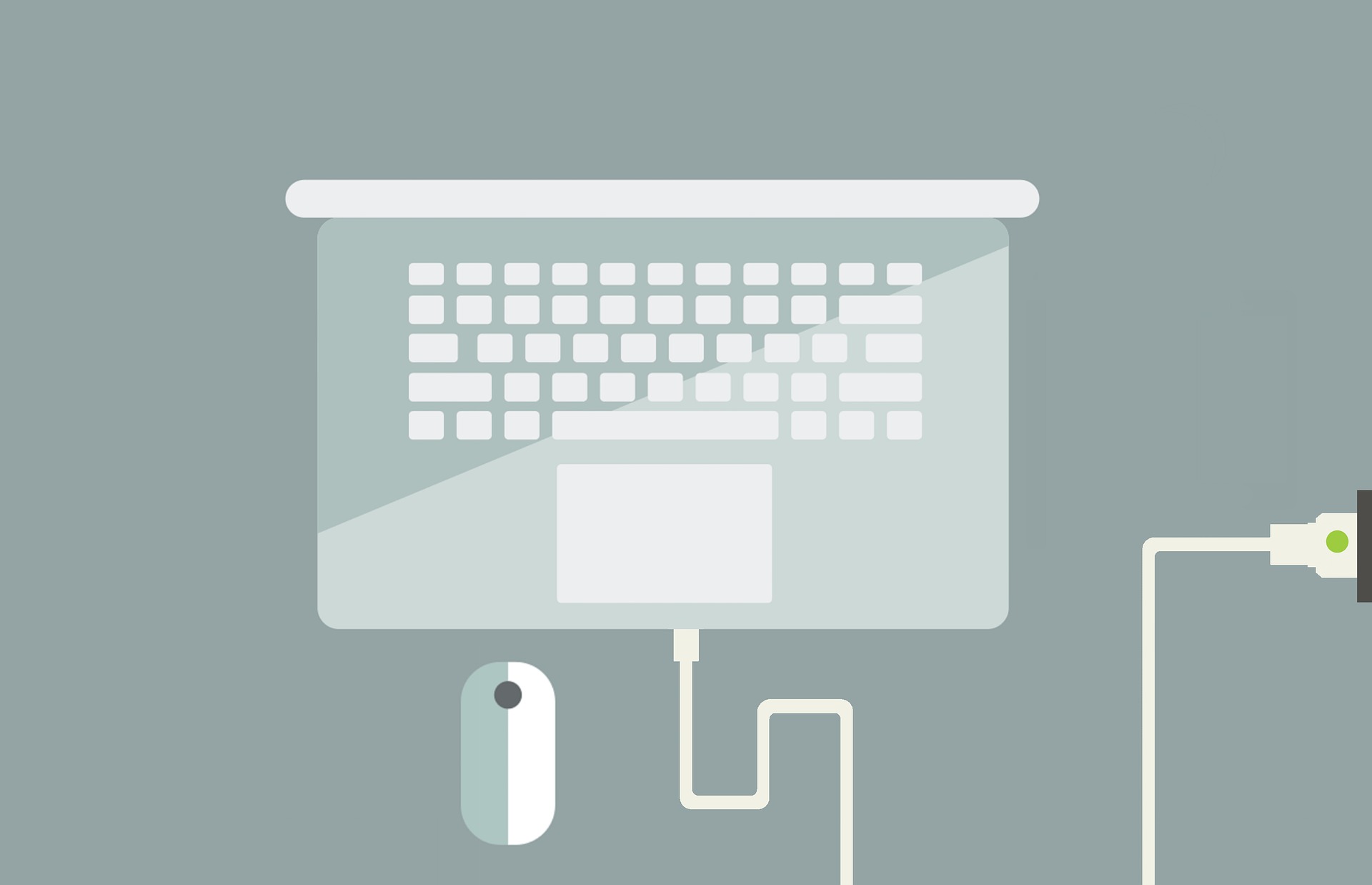
Proper charging techniques are critical for maximizing the performance and lifespan of a lithium battery. One of the most important aspects of lithium battery care is understanding how to correctly charge the battery.
Lithium batteries should always be charged using a dedicated charger that is specifically designed for that type of battery. It's important to use a charger that has been approved by the lithium battery manufacturer and to follow their recommended charging procedures.
When storing a lithium battery, it's essential to keep it in a cool and dry place, away from direct sunlight or extreme temperatures. It's also important to monitor the battery while it is being charged, as overcharging can significantly reduce its lifespan and performance.
In addition, discharging a lithium battery too much can also cause damage and reduce its capacity over time. If you experience any issues with your lithium battery, such as reduced performance or safety concerns, it may be necessary to replace the battery entirely.
By following proper storage and charging techniques, you can help ensure that your lithium batteries last as long as possible while maintaining optimal performance levels.
Store Lithium Battery Properly
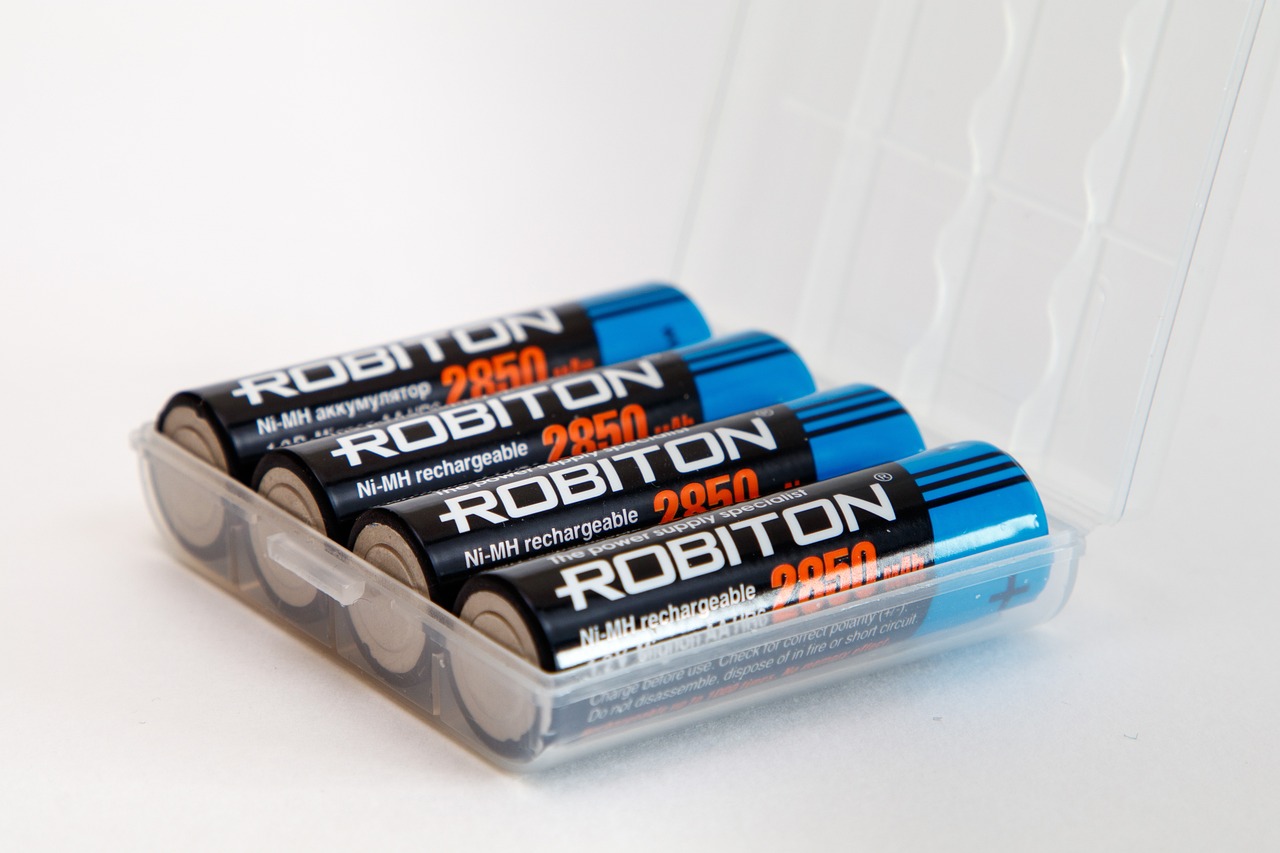
Storing a lithium battery safely and securely is crucial for sustaining its stability. Improper storage can lead to reduced performance, shortened lifespan, and even safety hazards. Here are some guidelines to follow for proper lithium battery storage:
Firstly, ensure that the battery is charged to around 50% capacity before storing it. This helps to prevent over-discharge during storage which can damage the battery.
Secondly, store the battery in a cool, dry place away from direct sunlight and heat sources. High temperatures can cause the internal components of the battery to degrade faster leading to a shorter lifespan.
Additionally, avoid exposing the battery to extreme cold as this can also affect its performance negatively.
Lastly, use appropriate packaging when storing or transporting lithium batteries. This helps to prevent physical damage that may result in safety hazards or even necessitate replacement.
Proper lithium battery care includes correct storage practices that help maintain stability and prolong lifespan while ensuring safety at all times. Following these guidelines will not only protect your investment but also ensure optimal performance whenever you need it most.
Operation Precautions

To ensure safe and efficient operation of lithium batteries, certain precautions must be observed. These precautions include proper lithium battery care, storage, charging, safety, and monitoring.
First and foremost, it is vital to handle lithium batteries with caution as they can cause injury or damage if not handled properly. Always use protective gear such as gloves and goggles when handling the battery. Moreover, avoid exposing the battery to extreme temperatures or moisture as this could damage the cells and affect their performance.
Secondly, proper lithium battery storage is crucial for maintaining its longevity. Store the battery in a cool and dry place away from direct sunlight or heat sources such as radiators or stoves. Additionally, make sure that the battery is stored separately from other metal objects to prevent short-circuiting.
It's also essential to keep an eye on the state of charge of your battery to avoid overcharging or complete discharge during storage periods that could lead to permanent damage. Overall, following these recommended practices will help you get maximum efficiency out of your lithium batteries while ensuring their safety at all times.
Transport Precautions
Transporting lithium batteries safely requires careful adherence to regulations and guidelines set forth by international authorities to avoid potential hazards. Improper handling during transportation can lead to safety concerns, such as fire or explosion.
Lithium battery storage is critical in ensuring the safe transport of these batteries. To prevent damage, it is essential to store them at room temperature and avoid exposing them to moisture or extreme temperatures.
Additionally, it is crucial to follow specific transport precautions when handling lithium batteries. For instance, they should be properly packaged and labeled according to international regulations. The packaging must also provide adequate protection against damage during transport.
Furthermore, it is vital not to stack boxes that contain lithium batteries since this can cause physical damage resulting in a short circuit or even a fire hazard. Following proper lithium battery care procedures will help ensure their longevity while minimizing the risk of accidents during transportation.
How to Charge a Lithium Battery for the First Time?
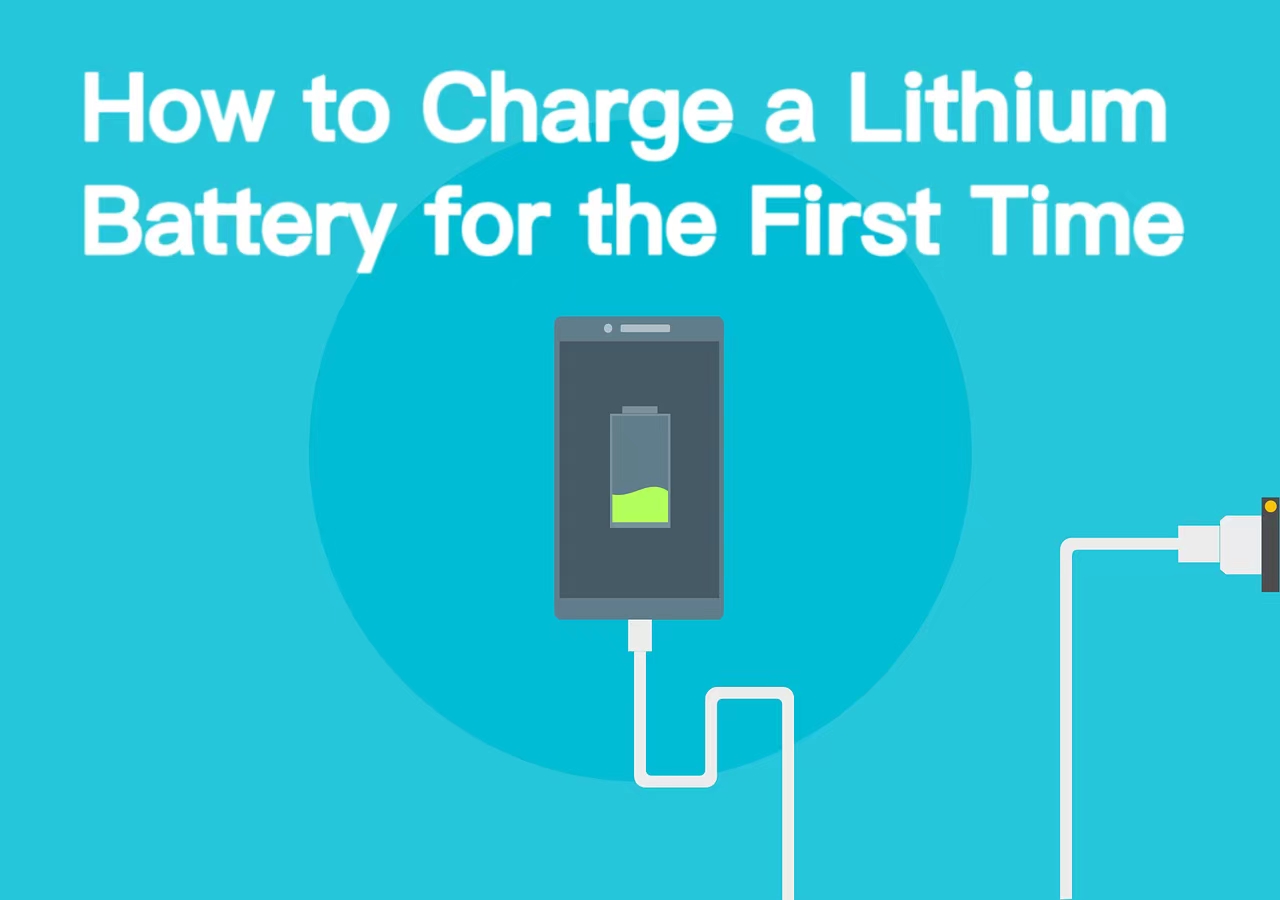
Optimal charging of a lithium battery for the first time requires careful attention to its initial charge level and the type of charger used. It is important to note that lithium batteries should not be fully discharged before their first charge, as this can cause permanent damage. Instead, it is recommended to charge them when they reach around 40-50% capacity. This ensures that the battery's cells are balanced and prevents overcharging.
When selecting a charger for your lithium battery, it is crucial to choose one that matches the specifications of your battery. Using an incorrect charger can lead to damage or even explosion. It is also important to consider the charging rate, which should never exceed 1C (the current required by a fully charged battery). Charging too quickly can cause overheating and reduce the lifespan of your battery.
To ensure proper care and maintenance of your lithium battery, it is also essential to follow safe storage practices and discharge it regularly. Storing a fully charged or completely discharged lithium battery for extended periods can result in performance degradation or even failure. Discharging your battery every few months helps maintain its capacity, but be sure not to let it drop below 20% capacity before recharging. By following these guidelines for charging, storing, discharging, and safety precautions, you can maximize the lifespan and performance of your valuable lithium batteries.
| Charging Dos | Charging Don'ts |
|---|---|
| Use correct charger | Use incompatible chargers |
| Charge at moderate rate | Charge at a moderate rate |
| Charge at appropriate voltage | Charge at a moderate rate |
Table: Do's and Don'ts when Lithium Battery Charging
Lithium-ion Battery Won't Charge
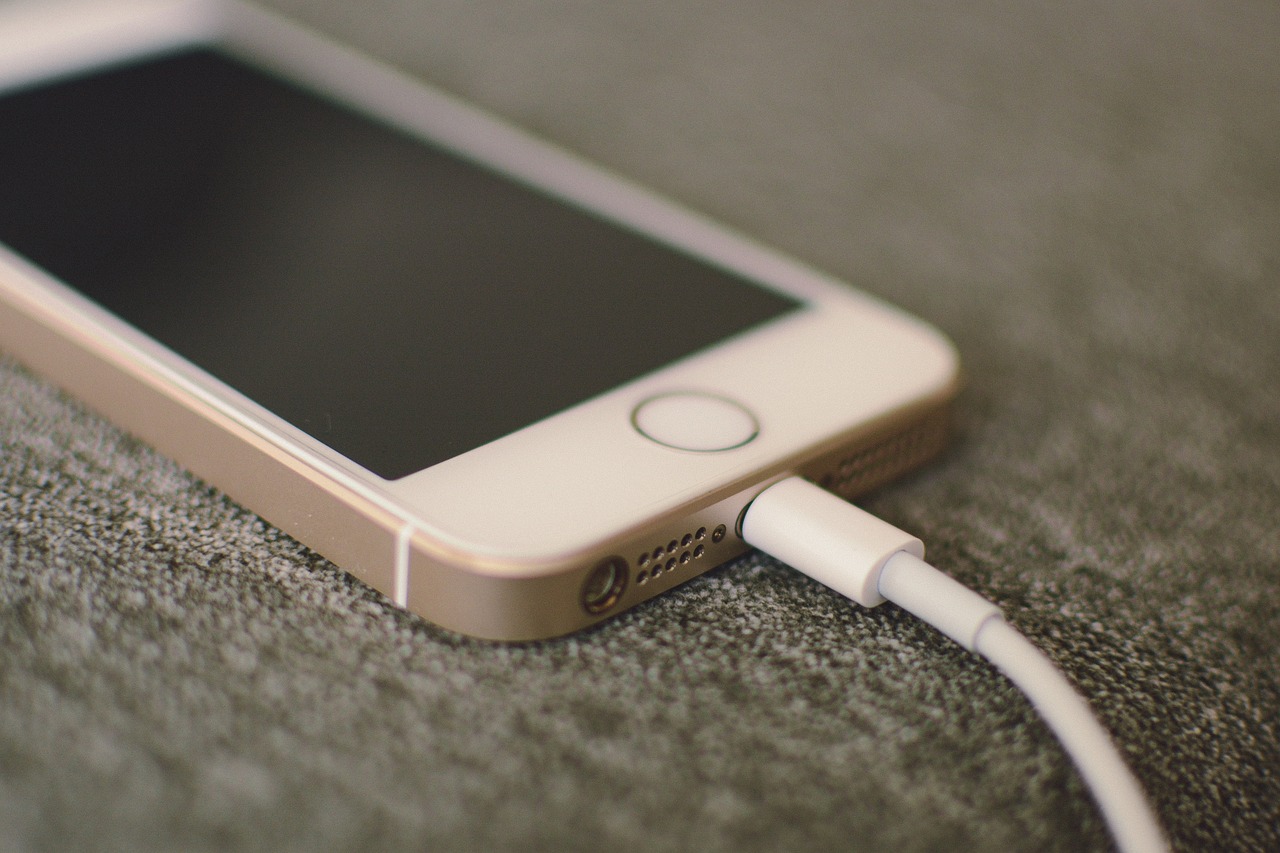
One of the most frustrating issues that lithium-ion battery users face is when their battery won't charge. There are several reasons why this may happen, including overcharging, undercharging, or a faulty charger. It can be challenging to troubleshoot these problems, but with proper care and maintenance, you can prevent them from happening.
To ensure that your lithium battery charges properly, it's essential to follow good lithium battery care practices. This includes storing your battery in a cool and dry place away from direct sunlight or heat sources. Additionally, only use chargers that are specifically designed for your battery type and avoid charging your battery for an extended period as this can lead to overheating.
If you're experiencing trouble with charging your lithium-ion battery, there are several troubleshooting steps you can take before seeking professional help. These include checking the charger's connection to your device and ensuring that the charger is working properly. If none of these steps work, it's essential to seek assistance from an experienced technician who can diagnose any underlying issues.
Proper lithium-ion battery care is crucial in preventing charging issues from occurring. By storing and charging your batteries correctly and performing regular maintenance checks on both the batteries and chargers themselves, you can extend their lifespan while keeping yourself safe at all times. Remember always to prioritize safety when handling any electrical equipment!
RV Battery Not Charging While Driving
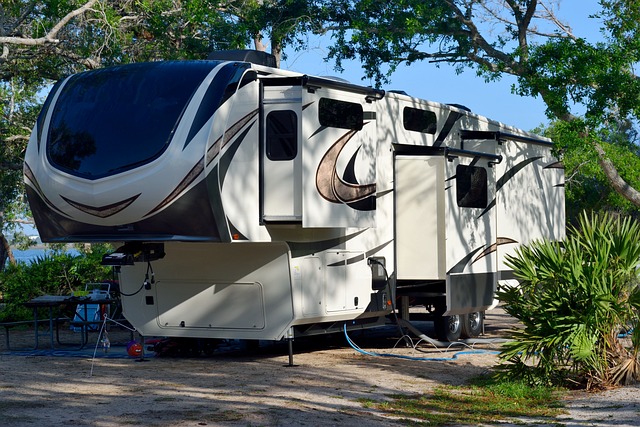
When an RV battery fails to charge while driving, it can be due to a variety of factors such as insufficient alternator output, faulty wiring connections, or a defective battery isolator. One possible cause is the alternator not producing enough voltage to fully charge the battery. This issue can be addressed by upgrading the alternator output or using a multistage charger that can boost the incoming voltage.
Another factor that can affect RV battery charging is faulty wiring connections. It is important to inspect all wires and terminals regularly to ensure they are securely connected and free from corrosion. If there are any signs of damage or wear, these should be addressed immediately to prevent further issues.
Lastly, a defective battery isolator can also lead to RV batteries not charging while driving. A good way to test this is by checking for continuity between the input and output terminals of the isolator with a multimeter. If no continuity exists, then replacing the isolator may be necessary.
By addressing these potential causes of RV battery failure during driving, you can ensure your vehicle's power source remains reliable and efficient on long trips.
How to Activate the "Starved" Lithium Battery?
Activating a 'starved' lithium battery can be a challenging task, as it requires careful balancing of the charge to avoid damaging the cells. A 'starved' battery occurs when the voltage drops below its recommended threshold due to prolonged disuse or over-discharge. This condition can cause permanent damage and reduce the battery's capacity, lifespan and efficiency. Therefore, it is essential to follow the correct procedure to revive a 'starved' lithium battery.
The first step in activating a 'starved' lithium battery is to connect it to an appropriate charger that supports Lithium-ion chemistry and has balancing features. The charger should have multiple charging modes such as constant current, constant voltage and trickle charge that will ensure proper charging without overloading or overheating the cells. A suitable charger should also have safety features such as over-current protection, short-circuit protection and reverse polarity protection.
Once you have connected your 'starved' lithium battery to an appropriate charger, monitor its progress by checking the voltage readings regularly using a multimeter or voltmeter. Do not disconnect or interrupt the charging process until all cells have reached their optimal voltage levels and are balanced. After completing this process successfully, it is advisable to perform regular maintenance checks on your lithium batteries by storing them in cool dry places away from direct sunlight and ensuring they are charged periodically even during extended periods of non-use.
| Charging Modes | Safety Features |
|---|---|
| Constant Current | Over-Current Protection |
| Constant Voltage | Short-Circuit Protection |
| Trickle Charge | Reverse Polarity Protection |
Reviving a 'starved' lithium battery requires patience, caution and adherence to specific guidelines for maximum results. Ensure that you use an appropriate charger with multiple charging modes and safety features while monitoring progress through regular voltage checks using a multimeter or voltmeter. Following these steps will help maintain your batteries at peak performance levels for longer periods while ensuring their safety and reliability.
How to Deal With Lithium Battery Overcharge?
In the previous subtopic, we discussed how to activate a 'starved' lithium battery. Now, let's move on to another important aspect of lithium battery maintenance - dealing with overcharging. Overcharging can be detrimental to the health and lifespan of your battery, so it is crucial to understand how to prevent it.
Firstly, it is important to note that most modern lithium batteries come equipped with overcharge protection circuits. However, if you are using an older or cheaper model without this feature, it is essential to monitor your battery's charge level closely and avoid leaving it plugged in for extended periods. Overcharging can cause a buildup of heat within the battery cells and lead to damage or even fire.
Secondly, if you do accidentally overcharge your lithium battery, there are steps you can take to mitigate potential damage. Immediately disconnect the charger from the device and remove the battery from its compartment if possible. Allow the battery some time (at least an hour) to cool down before attempting any further action. If you notice any signs of swelling or deformation in the battery pack, dispose of it safely and replace it with a new one.
Understanding how to deal with lithium battery overcharge is vital for maintaining its performance and safety. Always keep an eye on your device's charging process and take necessary precautions in case of accidental overcharging. Remember that prevention is key when dealing with Lithium-ion batteries!
What Causes Lithium-ion Batteries to Age?
Lithium-ion batteries are prone to age over time, impacting their performance and lifespan. Several factors contribute to this process, including the number of charging cycles, storage or working temperatures, charging characteristics, and discharge characteristics.
Understanding these key points helps individuals maintain optimal battery health and prolong the lifespan of their lithium-ion batteries. By exploring each factor in detail, we can gain a comprehensive understanding of what causes lithium-ion batteries to age.
Time
Chronological time plays a crucial role in determining the optimal usage and maintenance of lithium batteries. With each passing day, even when not in use, lithium-ion batteries slowly lose their capacity to hold a charge. This is because the chemical reactions that take place inside the battery cause wear and tear on its components over time.
In other words, as more cycles are completed, the battery's overall health deteriorates. However, it's important to keep in mind that not all lithium-ion batteries age at the same rate. Factors such as storage temperature, charging habits, and discharge rates can all affect how quickly a battery degrades over time.
For example, exposing a battery to high temperatures can accelerate its aging process by causing thermal stress on its internal components. On the other hand, storing a battery at low temperatures can slow down this process but may also cause other problems such as increased internal resistance or reduced capacity upon activation.
Therefore, it's essential to consider these factors when deciding how best to maintain and use your lithium-ion battery for optimal performance over time.
Charging cycle
During the charging cycle of a lithium-ion battery, electrons flow from the positive electrode to the negative electrode while ions move in the opposite direction. This movement is facilitated by an external voltage source that provides energy for the electrochemical reaction to occur. The charging process involves two stages: constant current and constant voltage.
During the first stage, known as constant current charging, a fixed amount of electrical current flows into the battery until its voltage reaches a predetermined limit. At this point, the charger switches to constant voltage mode where it maintains a steady voltage level while reducing the charge current. Once fully charged, any excess energy is dissipated as heat. It is important to note that overcharging can damage lithium-ion batteries and reduce their overall lifespan.
| Charging Cycle Stage | Current (A) | Voltage (V) | Charge Time (hrs) |
|---|---|---|---|
| Constant Current | 1-2C* | 4.20 V/cell** | 1-3 hrs |
| Constant Voltage | <0.05C*** | 4.20 V/cell** | Until fully charged |
*C = capacity of the lithium battery in ampere-hours
**Voltage per cell varies depending on specific battery chemistry
***C-rate indicates discharge or charge rate relative to capacity
Storage/working temperature
The temperature at which a lithium-ion battery is stored or operated can significantly impact its performance and lifespan. Generally, the optimal storage temperature for these batteries is between 20°C to 25°C (68°F to 77°F). This range ensures a balance between the rate of self-discharge and the preservation of capacity.
When exposed to temperatures outside this range, the battery's life expectancy decreases, and its performance may suffer.
In addition to affecting storage conditions, temperature also plays a critical role in determining the working conditions suitable for lithium-ion batteries. The ideal working temperature for these batteries is typically between 15°C to 35°C (59°F to 95°F), depending on the specific type of battery.
When used outside this range, it may result in poor performance and potentially permanent damage. Therefore, it is essential to ensure that lithium-ion batteries are not subjected to extreme temperatures during use or storage as doing so may compromise their effectiveness and longevity.
Charging characteristics
Charging characteristics of lithium-ion batteries are a crucial aspect to consider when ensuring the longevity and reliability of these power sources. Lithium-ion batteries require precise charging conditions to maintain their capacity and extend their lifespan. It is important to use the correct charger designed for the specific battery, as using an incorrect charger can result in overcharging or undercharging, both of which can damage the battery and reduce its overall performance.
Furthermore, it is recommended to avoid charging lithium-ion batteries at temperatures above 45°C (113°F) as this can cause permanent damage to the battery's chemistry. Charging should also be avoided at extremely low temperatures below 0°C (32°F), as low temperatures slow down chemical reactions within the battery cells, causing a reduction in charge acceptance.
Therefore, it is best to keep your lithium-ion batteries charged between 20-80% capacity and avoid extreme temperature conditions during charging processes. By following these guidelines, you can ensure that your lithium-ion batteries will perform optimally for an extended period of time.
Discharge characteristics
Optimizing the performance of lithium-ion batteries requires understanding their discharge characteristics. Several factors can influence the discharge rate, including temperature, load current, and state of charge. A battery's capacity to deliver power is dependent on its voltage level and state of charge, with higher voltages leading to faster discharge rates.
Temperature also plays a crucial role in determining a battery's discharge rate. Higher temperatures increase the rate of chemical reactions within the battery, leading to faster depletion. Additionally, high load currents can cause voltage drops within the system, reducing overall efficiency and potentially damaging the battery over time. By monitoring these factors closely and adjusting usage patterns accordingly, users can maximize their lithium-ion batteries' lifespan and ensure they continue performing optimally for longer periods.
| Factor | Effect on Discharge Characteristics |
|---|---|
| Temperature | Increases reaction rates; faster depletion |
| Load Current | Causes voltage drops; reduces efficiency |
| State of Charge | Higher voltages = faster discharges |
| Storage Time | Longer storage times = lower capacity |
Charge depth
Understanding the charge depth of lithium-ion batteries is crucial for prolonging their lifespan and maintaining optimal performance. Charge depth refers to the percentage of a battery's total capacity that is used during each charging cycle.
Lithium-ion batteries have a limited number of charge cycles, typically around 500, before their overall capacity begins to degrade significantly. Therefore, it is important to ensure that the battery is not overcharged or completely discharged in order to maximize its lifespan.
Overcharging can cause irreversible damage to the battery and reduce its overall capacity. It is recommended to stop charging when the battery reaches between 80-90% of its total capacity and avoid leaving it plugged in for extended periods of time at full charge.
On the other hand, completely discharging the battery can also be detrimental as it can lead to a loss in capacity and reduced overall performance. To prevent this, it is best practice to recharge when the battery reaches between 20-30% remaining capacity.
By understanding and managing charge depth, lithium-ion batteries can maintain their optimal performance and longevity over time.
Depth of discharge
Maximizing the longevity of lithium-ion batteries can be achieved by effectively managing the depth of discharge through careful monitoring and strategic recharging. The depth of discharge refers to how much energy is used from the battery before it is recharged. Lithium-ion batteries have a limited number of charge cycles, so minimizing the depth of discharge can help extend their lifespan.
One way to manage the depth of discharge is to avoid letting the battery drain completely before recharging it. Instead, aim to keep the battery level between 20% and 80% whenever possible. This will prevent unnecessary strain on the battery and reduce wear and tear on its components.
Additionally, allowing a lithium-ion battery to sit at a low charge for an extended period can cause irreversible damage, so it's important to recharge it regularly even if it hasn't been used extensively.
By being mindful of how deeply you discharge your lithium-ion battery and taking steps to maintain its charge level, you can help ensure that it lasts as long as possible.
Near full/empty time
The time at which a lithium-ion battery is near full or empty can significantly impact its overall lifespan. Here are some factors to consider when it comes to maintaining the health of a lithium-ion battery during near full/empty times:
- Avoid keeping the battery at 100% charge for an extended period of time, as this can lead to overcharging and damage to the battery.
- Similarly, avoid letting the battery fully discharge, as this can cause irreversible damage to the cells within the battery.
- If possible, try to keep the battery charged between 20-80%, as this is considered optimal for long-term health.
- When charging, use a charger specifically designed for lithium-ion batteries and avoid using fast-charging methods unless necessary.
- Take care not to expose the battery to extreme temperatures (hot or cold), as this can also negatively affect its lifespan.
By following these guidelines and being mindful of how you use and charge your lithium-ion batteries during near full/empty times, you can help extend their overall lifespan and maximize their performance. While it may require some extra effort on your part, proper maintenance will ultimately save you money in replacement costs and ensure that your devices continue running smoothly.
How to Test Lithium-ion Battery Capacity?
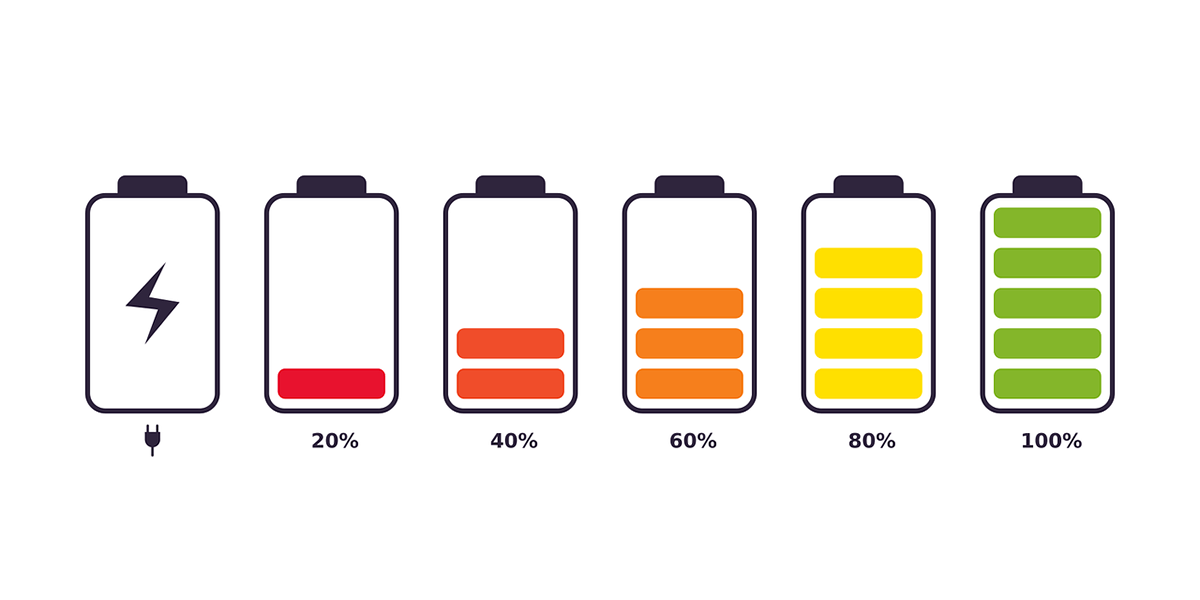
To accurately measure the capacity of a lithium-ion battery, it is recommended to use a multimeter or specialized battery tester. These tools will provide precise measurements that can be used to determine the health of your battery.
When conducting these tests, it is important to ensure that all readings are taken at room temperature and with a consistent discharge rate.
One common method for testing lithium-ion batteries involves discharging the battery until it reaches a specific voltage threshold, typically around 3.0 volts per cell. This allows you to determine how much energy is left in the battery and gives you an idea of how much life remains in the device before needing to recharge.
Another way to test capacity is through coulomb counting, which involves measuring the amount of current that flows in and out of the battery over time. This method requires more advanced equipment but can provide even more accurate results than other testing methods.
Overall, testing your lithium-ion batteries regularly is an important part of maintaining their health and ensuring they perform optimally over time. By following proper testing procedures and using high-quality equipment, you can get an accurate picture of your battery's capacity and make informed decisions about when it needs recharging or replacement.
Can Lithium Ion Batteries Leak?
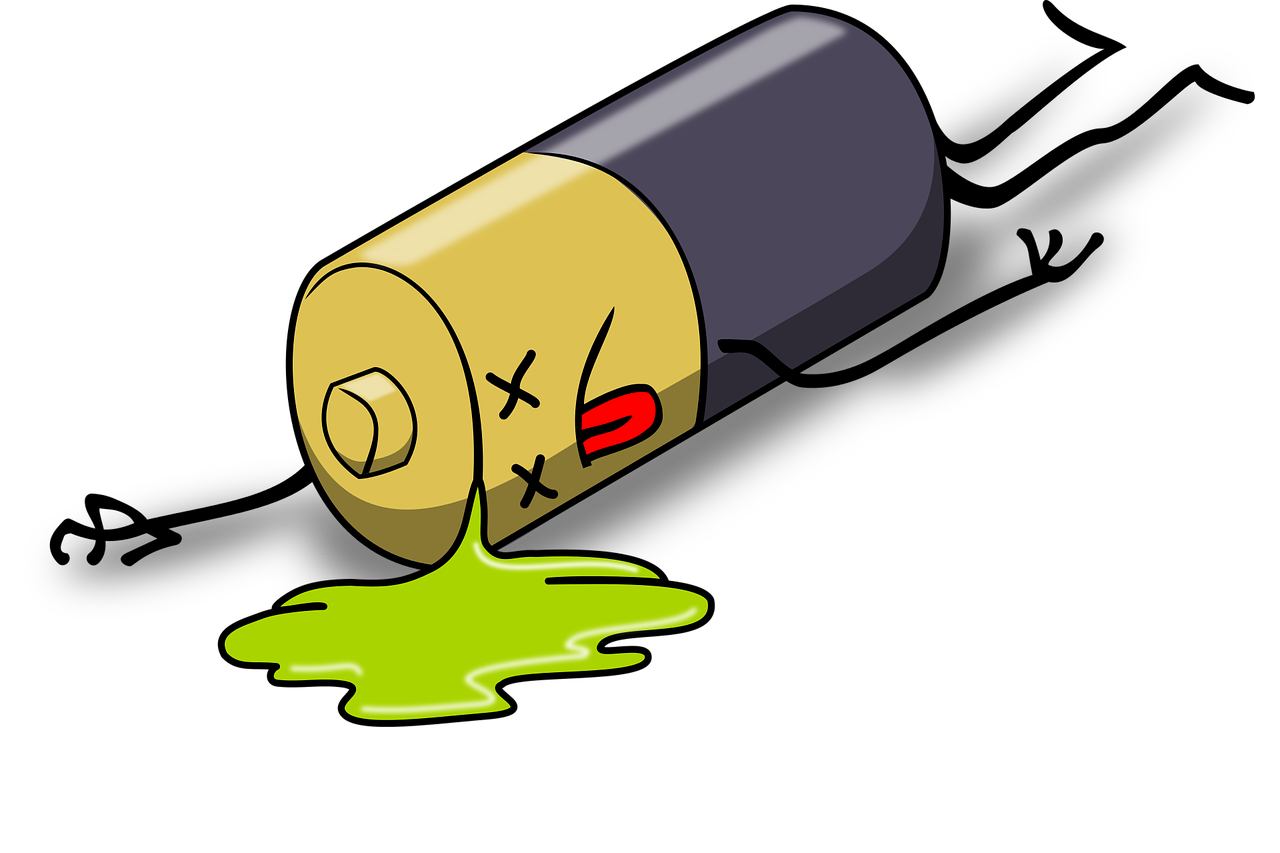
Lithium-ion batteries, while generally considered safe and reliable, have the potential to leak under certain conditions. This is because they contain highly reactive chemicals that can corrode metal and plastic components over time. In addition, exposure to extreme temperatures or physical damage can cause the battery casing to crack or rupture, leading to leakage of electrolyte solution.
To prevent lithium-ion batteries from leaking, it's important to follow some basic guidelines:
- Store them in a cool, dry place away from direct sunlight and sources of heat.
- Avoid dropping or exposing them to impact or pressure.
- Use only compatible chargers and cables designed for your specific device.
- Regularly inspect batteries for signs of damage such as bulging or discoloration.
In the event of a leaky lithium-ion battery, it's essential to take immediate action by removing the battery from the device and disposing of it properly according to local regulations. Contact with leaked electrolyte solution can cause skin irritation or other health effects if not handled correctly.
By following these guidelines for proper storage and usage, you can help ensure that your lithium-ion batteries remain safe and reliable over their lifespan.
Reasons for Lithium Battery Failures & Treatment Measures
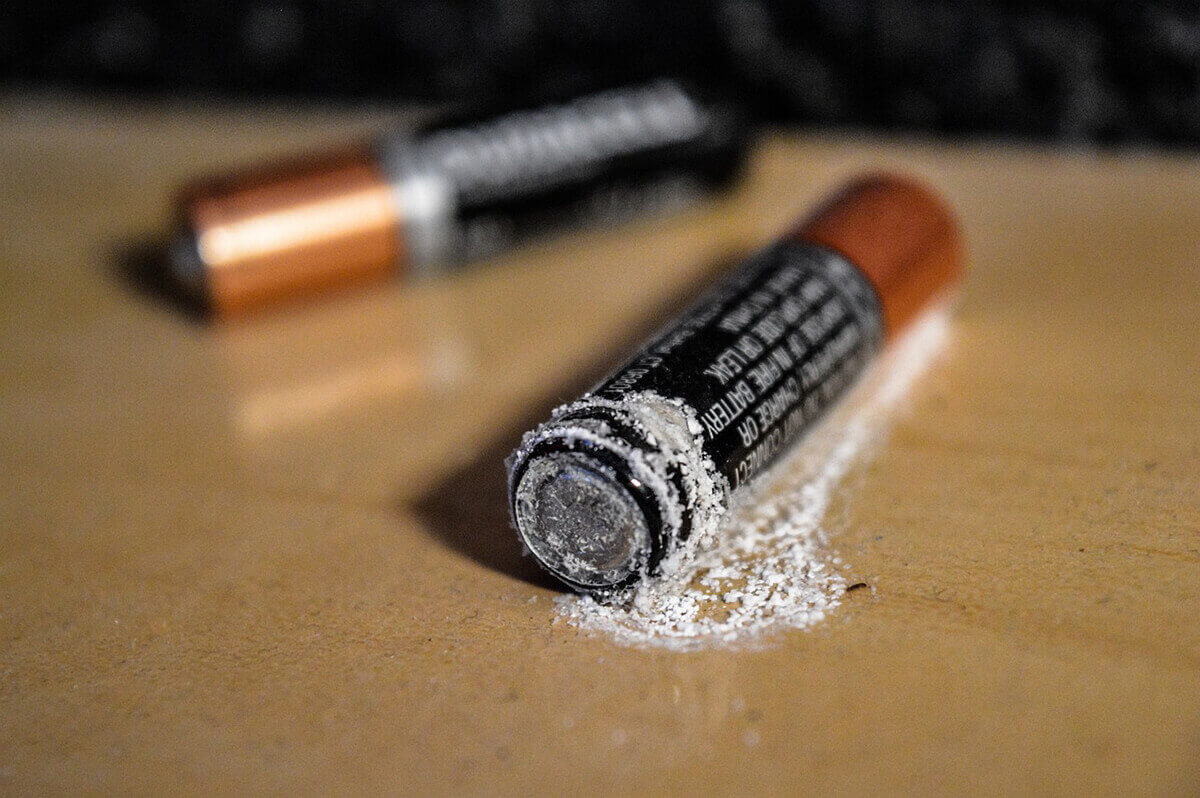
One potential cause of failures in lithium batteries is the degradation of electrode materials over time, which can lead to reduced capacity and performance. Lithium-ion batteries are particularly sensitive to this issue due to their high energy density and the fact that they have a limited number of charge-discharge cycles before degradation becomes noticeable. In addition, exposure to extreme temperatures, mechanical stress, and overcharging can also contribute to premature battery failure.
To prevent lithium battery failures, proper storage and usage practices should be followed. When not in use, batteries should be stored at room temperature and kept away from sources of heat or moisture. Avoid exposing them to extreme temperatures or storing them for long periods with low charge levels. When using lithium-ion batteries, avoid overcharging by removing them from chargers once they reach full capacity.
If a lithium battery does fail, there are several treatment measures that can be taken depending on the nature of the problem. For example, if a battery becomes swollen or overheated during charging or use, it should be removed from any devices or chargers immediately and allowed to cool down before being disposed of properly. In some cases, it may be possible to revive a dead battery by reconditioning it with specialized equipment or by performing deep discharge cycles. However, attempting these treatments without proper knowledge can result in further damage to the battery or even personal injury.
| Reasons for Lithium Battery Failures | Treatment Measures |
|---|---|
| Degradation of electrode materials | Proper storage & usage practices |
| Exposure to extreme temperatures & mechanical stress | Remove from devices/chargers when overheating/swollen |
| Overcharging | Dispose of properly; Recondition with specialized equipment if possible |
Revive Your Dead Lithium Battery
Reviving a dead lithium battery can be a challenging task that requires specialized equipment and knowledge of the underlying issue. However, before attempting to revive your battery, ensure that it is indeed dead by checking its voltage level using a multimeter. If the reading is below 2 volts, then it may require revival.
To revive your dead lithium battery, follow these steps:
- Charge the battery slowly - connect it to an appropriate charger with low current output (around 0.1C) for several hours until the voltage reaches around 3 volts.
- Activate the battery - apply a small charge pulse (short burst of high current) or use a specialized activation device to jump-start the chemical reaction inside the cells.
- Recharge normally - once activated, recharge your battery at normal charging rates until full capacity is restored.
It's essential to note that reviving a lithium battery comes with some risks, including explosion or fire due to overheating caused by overcharging or applying too much current during activation. Therefore, if you're not confident in your ability to perform these procedures safely, seek help from professionals or dispose of your dead battery properly.
Lithium Battery Pack on the Plane
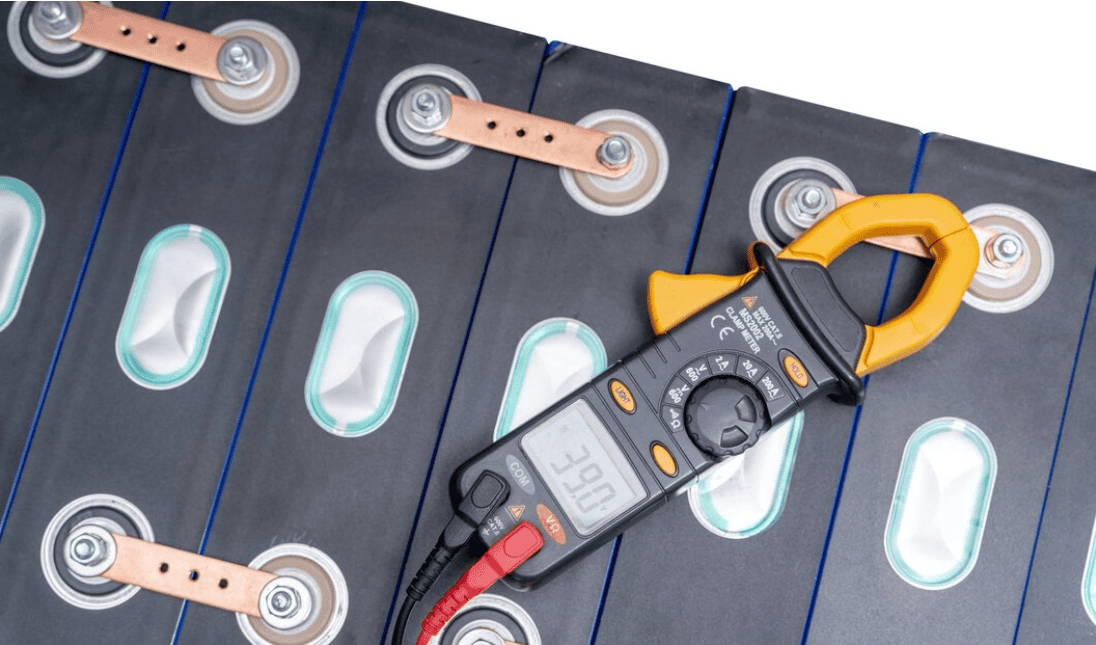
When transporting electronic devices with lithium battery packs on a plane, it is important to adhere to strict safety regulations and guidelines in order to prevent potential hazards. Lithium batteries have a high energy density that makes them efficient power sources for portable electronics, but they also pose a risk of fire or explosion if not handled properly. The International Air Transport Association (IATA) has established guidelines that must be followed by airlines and passengers to ensure the safe transport of lithium batteries.
One of the key requirements for transporting lithium batteries on a plane is to pack them in your carry-on luggage instead of checked baggage. This rule applies to both loose and installed batteries, as well as spare or external battery packs. The reason for this regulation is that any malfunction or damage to the battery can quickly escalate into a dangerous situation when combined with other flammable materials in cargo holds. In addition, you should protect the battery terminals from short circuits by covering them with insulating tape or placing each battery in an individual plastic bag.
The following table summarizes some additional guidelines for transporting lithium batteries on a plane:
| Type of Battery | Allowed in Carry-On Luggage? | Allowed in Checked Baggage? |
|---|---|---|
| Spare Batteries | Yes | No |
| Installed | Yes | No |
| External Packs | Yes | No |
By following these rules and guidelines, you can safely travel with your electronic devices and lithium batteries without compromising your own safety or that of others around you. It is important to note that airlines may have their own specific policies regarding lithium batteries, so always check with your airline before traveling.
Lithium Battery Maintenance for Electric Vehicles

To ensure optimal performance and longevity of an electric vehicle, proper care and attention must be given to the lithium battery system. Lithium batteries have a finite lifespan that depends on factors such as usage patterns, charging habits, and temperature conditions. Therefore, regular maintenance is crucial to keep the battery in good condition.
The first step in maintaining a lithium battery for an electric vehicle is to follow the manufacturer's instructions for charging and discharging. Overcharging or undercharging can damage the battery cells, reducing their capacity over time.
It is also essential to avoid exposing the battery to extreme temperatures since high heat or cold can cause irreversible damage to the cells.
Another important aspect of lithium battery maintenance is monitoring its state-of-charge (SOC) regularly. SOC refers to how much energy remains in the battery at any given time. Maintaining a healthy SOC range between 20% and 80% helps prolong a lithium battery's life by reducing stress on its cells.
Furthermore, it is advisable not to leave an EV with a fully charged or discharged battery for extended periods since this can lead to permanent cell damage.
Taking good care of a lithium battery pack in an electric vehicle requires adhering strictly to manufacturer guidelines regarding charging and discharging practices while keeping an eye on SOC levels regularly. Maintaining optimal conditions around temperature ranges ensures that the cells remain healthy longer.
With proper maintenance, one can enjoy better performance from their EVs with reduced costs of replacing worn-out batteries prematurely while contributing towards environmental conservation efforts by extending one's EV's useful life expectancy beyond what would otherwise be possible without diligent ongoing care and attention being paid towards these vital components onboard each automobile we drive daily!
Lithium Battery Maintenance for Smartphones and Laptops

One important factor in ensuring the longevity and optimal performance of portable electronic devices such as smartphones and laptops is regular attention to the device's power management settings, which can significantly impact the overall lifespan of the device's lithium-ion battery. Lithium-ion batteries are sensitive to overcharging, overheating, and excessive discharge cycles. Therefore, it is crucial to manage the charging cycle to prevent damage that could shorten its lifespan.
To maintain a healthy battery life for your portable electronic devices, consider implementing these maintenance tips:
- Avoid charging your device overnight or leaving it plugged in after it reaches 100% charge.
- Keep your device at room temperature while charging, as exposure to excessive heat or cold temperatures can degrade battery performance.
- Use the original charger that came with your device since third-party chargers may not provide adequate voltage and current levels required by your device.
Additionally, you should avoid using features on your smartphone or laptop that require high energy consumption for long periods. These include screen brightness set at maximum levels, Wi-Fi hotspot tethering and running multiple apps simultaneously.
By managing such features effectively and following these simple steps above, you can extend the life of your lithium-ion battery for years to come.
Regularly maintaining proper power management settings is key to extending the lifespan of lithium-ion batteries in smartphones and laptops. Avoiding overcharging cycles and keeping them at moderate temperatures during charging sessions while also limiting usage of high-energy-consuming features on devices will aid in optimizing their functionality. Furthermore, using only original chargers ensures adequate voltage levels are provided during charging sessions. With this knowledge put into practice will result in extended battery life for years to come giving its users an enjoyable experience without any worry about needing frequent replacements or repairs.
Best Practices for Lithium Battery Usage

Optimizing the performance of portable electronic devices and extending the longevity of their lithium-ion batteries requires implementing effective techniques that minimize power consumption and prevent damage from overcharging or overheating. One such technique is keeping the battery charged between 20% and 80% capacity to avoid extreme charge levels that can harm the battery's lifespan.
Additionally, avoiding exposure to high temperatures, direct sunlight, or prolonged charging periods can help prevent thermal runaway which can lead to explosions.
Another important factor in optimizing lithium-ion battery usage is minimizing energy usage by turning off unused applications or features when not in use. Reducing screen brightness, disabling Wi-Fi and Bluetooth connections, and only using background syncing when necessary are all effective ways of reducing power consumption.
It is also advisable to avoid using fast charging options as they can generate more heat than regular charging methods leading to a shorter life span for your device's battery.
Maintaining proper storage practices for lithium-ion batteries is essential for prolonging their lifespan. Storing them at around 60% capacity in a cool dry location helps reduce chemical aging while still retaining enough charge to power up quickly when needed.
Properly disposing of old or damaged lithium-ion batteries according to local regulations also helps protect the environment from hazardous substances found in these batteries' chemistry ensuring safe disposal after their useful life has ended.
Handling Lithium Batteries: Safety Tips
Ensuring the safe handling of lithium batteries is crucial to avoiding potential hazards and risks associated with their use. Lithium batteries are highly reactive and can cause fires or explosions if mishandled.
Here are some safety tips to keep in mind when handling lithium batteries:
- Keep the battery away from heat sources: Lithium-ion batteries can explode when exposed to high temperatures, so it's important to store them away from direct sunlight or any other heat source.
- Use proper protective gear: When dealing with lithium batteries, always wear gloves and eye protection to avoid any potential chemical exposure or burns.
- Avoid overcharging: Overcharging a lithium battery can lead to overheating, which can cause thermal runaway a process where the battery temperature rises uncontrollably until it explodes or catches fire.
- Do not puncture or damage the battery: A damaged lithium battery is dangerous as it may release flammable chemicals that could result in an explosion. Therefore, always handle them with care and avoid damaging them in any way.
- Proper disposal of used batteries: It's essential to dispose of used lithium batteries properly as they contain hazardous materials. Consult your local recycling center for information on how best to recycle them.
Following these safety tips will help ensure that you handle your lithium battery safely and reduce the risk of accidents occurring. Always remember that while these batteries have numerous benefits, they also pose significant risks if not handled correctly.
Lithium Battery Recycling: Why It's Important
Recycling lithium batteries is a crucial step towards reducing the negative impact of hazardous materials on the environment and public health. Lithium batteries are widely used in various electronic devices, electric vehicles, and renewable energy systems. However, once their lifespan comes to an end, they can pose a significant threat to the environment due to their potential for the leakage of toxic chemicals such as lithium cobalt oxide and nickel-cadmium.
The recycling process of lithium batteries involves extracting valuable metals such as cobalt, nickel, and lithium for reuse while ensuring that harmful materials are disposed of safely. By recycling these batteries, we can prevent them from ending up in landfills where they can contaminate soil and waterways or even cause fires. Moreover, recycled materials can be used to manufacture new products which reduces the need for mining raw materials and conserves natural resources.
In order to encourage more people to recycle their lithium batteries responsibly, it is important to raise awareness about its benefits. The table below shows some interesting facts about how recycling lithium batteries can positively impact our environment:
| Recycling Facts | Benefits |
|---|---|
| One tonne of recycled Li-ion battery material equals 1-2 tonnes of mined ore | Conserves natural resources |
| Recycling one million laptops saves enough energy equivalent to power more than 3 thousand U.S households annually | Reduces CO2 emissions |
| A single cell phone battery contains enough zinc and manganese that if extracted could provide clean drinking water for one person for a year | Helps address global issues like access to clean water |
Overall, recycling lithium batteries is not only beneficial but also necessary in order to promote sustainability efforts globally. Through responsible disposal practices and proper handling procedures at all levels - from individuals using electronic devices up through manufacturers producing them - we can help minimize environmental damage caused by hazardous waste while also conserving valuable resources.
Recommended Lithium Battery Brands and Products
When considering the use of lithium batteries, it is important to be aware of the various brands and products available on the market. The quality of a lithium battery can vary greatly between brands, with some offering longer lifespans and higher energy densities than others. It is important to choose a reputable brand that has been proven to provide reliable performance.
One such brand is Tesla, which produces high-quality lithium batteries for use in electric vehicles and home energy storage systems. Their batteries are known for their long lifespan and ability to store large amounts of energy efficiently.
Another highly respected brand is LG Chem, which offers a range of different battery solutions including those used in electric vehicles, mobile devices, and power tools.
For those looking for a more affordable option, there are also several lesser-known brands that offer good value for money without sacrificing performance. For example, the Chinese company CATL produces high-quality lithium batteries at affordable prices and has quickly become one of the largest lithium battery suppliers in the world.
Ultimately, when choosing a lithium battery brand or product it is important to consider factors such as price, performance, reliability and durability before making your final decision.
The Common Lithium Ion Battery Questions and Answered
Exploring the mysteries behind lithium-ion batteries is an intriguing task that requires in-depth knowledge and understanding of this innovative technology.
One common question about these batteries is whether they require any special maintenance. The answer is that while lithium-ion batteries do not need much maintenance, there are a few things you can do to ensure that they perform optimally for as long as possible.
One important thing to keep in mind is to avoid exposing your battery to extreme temperatures, both hot and cold. Lithium-ion batteries work best at room temperature, so try to avoid exposing them to temperatures above 95°F or below 32°F.
You should also avoid overcharging or undercharging your battery, as doing so can shorten its lifespan. Be sure to use the charger that came with your device or a recommended replacement, and don't leave your battery plugged in once it's reached full charge.
Another common question about lithium-ion batteries is whether they have a memory effect. The memory effect occurs when a battery 'remembers its most recent charge level and only charges up to that point instead of reaching full capacity. Fortunately, lithium-ion batteries do not suffer from memory effects like some older types of rechargeable batteries.
However, it's still a good idea to discharge your battery completely every once in a while before recharging it fully - this helps keep the battery calibrated and ensures accurate readings of its remaining capacity over time.
Learn More Top Questions About Lithium Batteries!
Frequently Asked Questions
Are there any precautions to take when storing lithium batteries for long periods of time?
When storing lithium batteries for long periods of time, it is crucial to ensure that they are charged to around 50% and kept in a cool, dry place. Avoid exposing them to high temperatures or humidity, as this can cause degradation and reduce their overall performance. Additionally, it is recommended to check the battery's charge level periodically and recharge if necessary.
Can lithium batteries be charged with a power bank?
Yes, lithium batteries can be charged with a power bank as long as the power bank output matches the battery input voltage and current specifications. However, it is important to follow proper charging protocols to avoid damage to the battery.
What is the maximum temperature a lithium battery can withstand?
A lithium battery's maximum temperature varies depending on the specific type and manufacturer. For instance, a 18650 lithium-ion battery can typically operate between -20°C to 60°C, beyond which it may suffer irreversible damage.
How can I tell if my lithium battery needs to be replaced?
Lithium batteries have a finite lifespan and will eventually need to be replaced. Signs of degradation include reduced capacity, longer charging times, and increased heat production during use. Regular maintenance can extend the life of the battery.
Is it safe to use third-party chargers for lithium batteries?
Ironically, using third-party chargers for lithium batteries may not be safe as they often lack the necessary safety features. Technical precision and attention to detail are essential when choosing a charger to ensure optimal battery health and safety.
Conclusion
In conclusion, understanding the basics of lithium batteries and their maintenance is crucial for their optimal usage. It is important to note that different types of lithium batteries have varying uses and require specific handling techniques.
Maintaining proper charging habits, storing them properly, and adhering to safety measures are essential in prolonging the lifespan of these batteries.
As a figure of speech, it is imperative to treat lithium batteries like precious gems - handle them with care, charge them appropriately, and recycle them responsibly. By following these guidelines and utilizing recommended brands and products, users can ensure that they get the most out of their lithium battery experience while minimizing any potential hazards.
In summary, proper knowledge and adherence to best practices will not only maximize performance but also contribute positively to our environment.

Thank you for this amazing guide, they're helpful. ♥️
Regular maintenance isn't about micromanaging your battery. It's about preventive care, ensuring your sunshine savings last for years to come.
P.S. Don't forget to check your specific battery's manufacturer recommendations. They know their babies best!
[…] 3. Lithium batteries provide a longer lifespan and more reliable performance, so they require less maintenance. […]